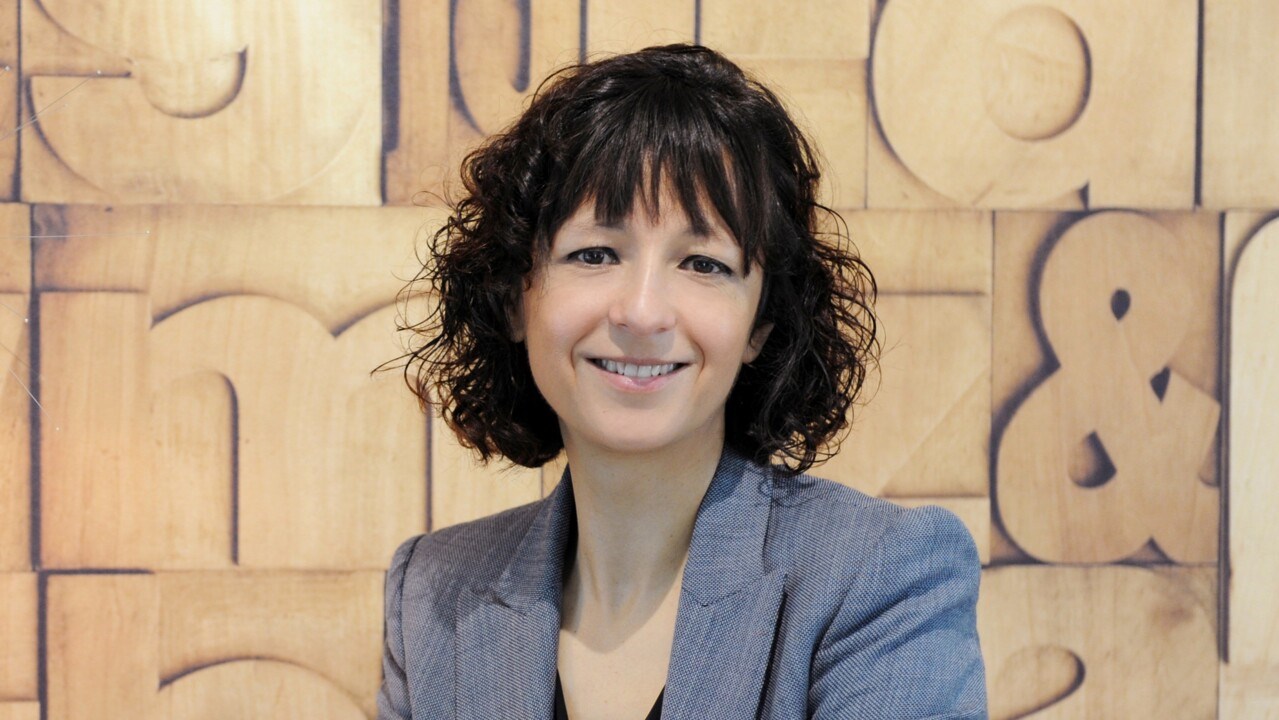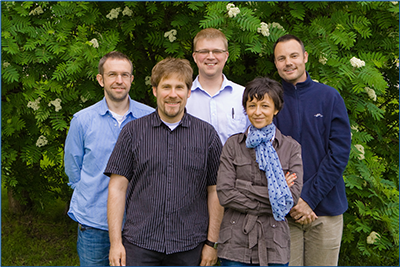Former MIMS group leader, Emmanuelle Charpentier, awarded the Nobel Prize for Chemistry
The Nordic EMBL Partnership congratulates Emmanuelle Charpentier, and collaborator Jennifer A. Doudna, on receiving the Nobel Prize for Chemistry 2020. Here, Directors of the Nordic EMBL Partnership nodes past and present, alongside the former Director General of EMBL, recall Professor Charpentier’s appointment as one of the Partnership’s first group leaders, and discuss why the 'EMBL model' is so important for driving research innovations in the life sciences.


Professor Charpentier was one of the first young group leaders recruited to the Laboratory for Molecular Infection Medicine Sweden (MIMS) in 2009.
The opportunity to establish her group at MIMS, which is embedded within the Umeå Centre for Microbial Research (UCMR) and situated amongst the vibrant molecular infection medicine research environment of Umeå University, saw Professor Charpentier make some of the fundamental discoveries that have enabled subsequent applications of CRISPR-Cas9. CRISPR is today used across a wide range of scientific research areas, including human and veterinary medicine, agriculture and biotechnology.
Professor Bernt Eric Uhlin, former Director of MIMS comments:
“We were all extremely happy and proud when the announcement came last week that The Royal Swedish Academy of Sciences decided to award the Nobel Prize in Chemistry 2020 to Emmanuelle Charpentier, and Jennifer A. Doudna, “For the development of a method for genome editing”.
Our warmest congratulations from all Umeå colleagues were forwarded to Emmanuelle, who honoured Umeå University by asking us to host an online press conference the same afternoon the prize was announced. Professor Bernt Eric Uhlin.
EMBL model champions young group leaders
Emmanuelle Charpentier was one of the first group leaders recruited to MIMS according to the ‘EMBL model’; the process followed by all four Nordic EMBL Partnership nodes since their inauguration. These group leader recruitments follow the EMBL non-tenure model and involve recruiting young and international researchers for a maximum of nine years (5+4 years, with mid-term review). As Professor Iain Mattaj, the former Director General of EMBL (European Molecular Biology Laboratory) and current Director of Human Technopole, explains:
“The purpose of the EMBL Partnership Laboratory Programme, which was originally suggested by the Nordic delegates to the EMBL Council and designed with their help in the late 1990s, was to create a network of laboratories that would work within national systems but follow the EMBL model. This model means they are based on the international recruitment of young Group Leaders on fixed-term contracts of nine years who are provided with enough funding to support a small laboratory, the opportunity to apply for further competitive funding, and given complete scientific freedom and independence.”
This model, coupled with careful selection, ongoing mentorship and rigorous mid-term external review formed much of the basis of EMBL’s success. It was therefore a tried and tested approach that could work in other centres and countries, providing the right applicants could be attracted.
Different approach to building a research centre
Professor Mattaj continues, “This is how the Nordic EMBL Partnership for Molecular Medicine was set up. All four nodes work closely together in recruitment and administration, as well as in research. They have all succeeded in recruiting an international mix of high-quality young scientists and have provided them with a setting to produce excellent, high-impact research.”
MIMS was the first Nordic EMBL Partnership node to recruit group leaders using this model. Umeå University’s interview committee had until then traditionally recruited senior and established researchers who matched the standard recruitment of a university professor. Prof. Mattaj was asked to chair the search committee by Bernt Eric Uhlin, who had led the competitive bid to bring the Swedish EMBL Partnership lab to Umeå and was selected to be the first Director of MIMS.
As Professor Mattaj explains, “Following the EMBL model, I had chosen people who had never worked in Sweden and who had either no, or only a few years, of experience as an independent PI. After a long discussion, where my point of view was strongly supported by Bernt Eric, we reached a compromise list of nine candidates to interview. The interviews were very successful, to the point that offers were made to a total of five candidates. Three, Emmanuelle Charpentier, Constantin Urban and Jörgen Johansson, accepted the offer and so MIMS was off to a flying start. It has never looked back.”
Professor Uhlin adds, “This first recruitment round really set the stage for the coming many recruitment efforts that since then are done with participation by committee members representing also our Nordic partners.”
Foresight of the recruitment committee to see huge potential
Professor Kjetil Taskén, former Director of NCMM and a member of many of the recruitment committees for group leader positions at MIMS and the other Nordic EMBL Partnership nodes continues, “Across the Nordic EMBL Partnership, the four nodes have together recruited over 50 group leaders. It can be difficult to spot the most talented researchers so early on in their career. These group leaders need to have seen some early successes and show they have a clear vision and ambition about what they want to achieve with their research.”
“Emmanuelle wanted to investigate how some types of bacteria protect themselves against virus attacks. We didn’t immediately see the relevance of this or quite understand its applications, but we saw that she had done well in her career and she also sold her vision very well. After her appointment, she went from strength to strength as a group leader and researcher, and we were delighted when she reported on CRISPR in Nature. It then became apparent that her discovery was extremely exciting indeed; the CRISPR technology meant human DNA inside living cells could be edited and the rest, of course, is history.”
Professor Mattaj comments: “Obviously the production of work that has enough impact to win the Nobel Prize cannot be planned, and Emmanuelle Charpentier’s level of success will always be a happy exception. My experience in many research systems has shown that enabling people to follow their own original ideas, coupled with stringent selection and regular external review, can lead to many important breakthroughs.”
For MIMS and, by extension the Nordic EMBL Partnership, to have been home to Emmanuelle Charpentier and the type of successes that her career has seen, is both an honour and further validation that this model of recruitment works.
Professor Poul Nissen, Director of DANDRITE and current Speaker for the Nordic EMBL Partnership adds, “I express my deep admiration for the early recognition that MIMS and the first Nordic EMBL Partnership recruitment panel showed in appointing Emmanuelle Charpentier as a group leader. They had the foresight to see so early on that her proposal was innovative, exciting and had huge potential."
An ambassador for MIMS and for the Nordic EMBL Partnership
Professor Uhlin concludes: “Over the years, Emmanuelle has been the very best ambassador for Umeå and our Nordic EMBL Partnership nodes. For her groundbreaking work, she continues to receive many awards and honours. From the onset of joining MIMS, Emmanuelle has expressed her enthusiasm about the concept here with education and research at a high level and she is always mentioning her appreciation of The Nordic EMBL Partnership for Molecular Medicine. It is a fantastic privilege for us to have Emmanuelle´s kind approval of our efforts to keep up a vivid international research environment ad modum EMBL.”
CRISPR-Cas9 is today widely used throughout research
CRISPR, often referred to as ‘genetic scissors’ plays a critical role in much of the research taking place across the Nordic EMBL Partnership, and at EMBL and its partner sites.
The results of CRISPR-based research has already had an enormous effect in the life sciences, contributing to a better understanding of the mechanisms of life and the development of disease models and screenings. While the technology is already waiting in the wings to be marketed in agriculture, the mission in the field of medicine over the next years will be to translate it into safe and effective therapies for serious human diseases for which there are currently no treatment options.
Learn more about Emmanuelle Charpentier's time in Umeå via the Umeå University website